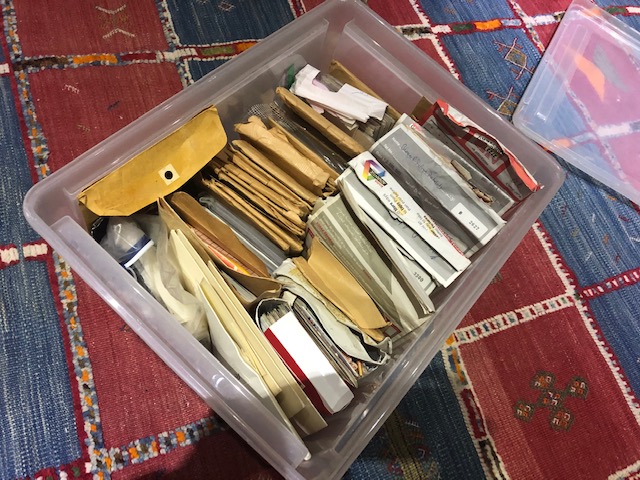Treasures in a box: the Shuwaymah Sabbah mare of the Jarbah in 1999
I am locked down here in South Africa. Wherever you are, there is a high chance you’re locked down too. I am busier than ever, though, as work and the rest surreptitiously blend into each other. At least I am lucky to still have a job, so I am counting my blessings.
One good thing about the lockdown in my case is that I found some time to open a box of old horse photos. “Old” here means from the time you could hold a photo in your hands. I scanned a few of those.

Here’s one for you. I took it one evening of August 1999 in Hama, Syria, at the farm of the late Fuad al-Azem “Abu Tamer”. It shows the old Shuwaymah Sabbah mare Al-Jawzaa, a grand and classy mare of the old desert type, from the breeding of Rakan al-Nuri al-Mashal Basha al-Jarba, and from the old war line of these Sheykhs of the Northern Shammar.
The mare was taken out of her stall and brought back in within minutes as the sun was setting and we had finished sipping coffee, just long enough for me to snap three photos. Unfortunately, neither photo does justice to how I remember her, a smaller, heavily fleebitten mare with very fine skin and a graceful, light way of carrying herself. What struck me most as I was taking the photos was the combination of delicateness and power that she displayed. There was something of the falcon in her, not only the coat pattern, but also the quivering and the lightness of movement.
One man present said she was 28 and we could not believe it (I checked later on — registered as born in 1970 so even 29), because she had foaled a filly by Abu Tamer’s stallion Mashuj, an asil horse as can be but not a good sire. The dark grey weanling filly was for sale (5000 USD because we had admired the mare rather openly) but she was less well built than her dam. The shoulder and the withers were gone. We seriously contemplated buying the filly nevertheless and we should have in hindsight on account of her dam. Instead we opted for another chestnut filly, a Krush by Basil Jadaan’s stallion Mubarak out of a full sister of Basil’s black stallion Mokhtar. My father had a soft spot for the Krushan strain. All the tribes of the Jazirah mated it.
For some reason the Northern Shammar did not mate these Shuwaymat, but their Jarbah Sheykhs did use them on their own mares from time to time. The 1906 Davenport import *Hadba, the war mare of ‘Ajil Ibn Zaydan al-Jarba, is the daughter of a Shuwayman Sabbah stallion, presumably from that same line. An older daughter of al-Jawzaa, Dallah, was bred to the Shuwayman horse of Nawwaf Turki al-Jarba and produced a colt in 1988.

Here is what Lady Anne Blunt had to say about this strain in her Journals, March 15, 1878 entry penned at the Shammar camp in the Jezireh: “Besides her there was Faris’ own mare, a bay Shouaymeh Sbah ,with a fine shoulder, good head, short cannon bones, very strong altogether, hindquarters plain. We afterwards saw her gallop well…“. Also one year later, on March 12, 1879 in Bagdad: “We saw … a black horse Sheyman Seba which is a new acquisition and for which we did not care. He is a great big horse with inferior head and hinquarter. The Shammar, from whom he is said to come, have got Shueyman Seba, but he is not half as good as Faris Jerba’s mare of that breed.”
So the Jarba had had the Shuwayman strain for more than 120 years when I took that picture, 21 years ago. You’ve got to respect that.
The English translation of the Abbas Pasha manuscript by Gulsun Sherif mentions that a certain Fadel al-Jarba got a Shuwayman Sabbah line from the Ruwalah. The problem is, there is no Fadel al-Jarba in the Jarba family tree. It must be a transcription error for Fares or Farhan. Let me check the Arabic version.
I hope, while you are poking around in there, that you are making high resolution scans with the Arabian Horse Archives in mind!
(Is there any way for me to be able to avoid typing in my name and email each comment? I’m lazy.)